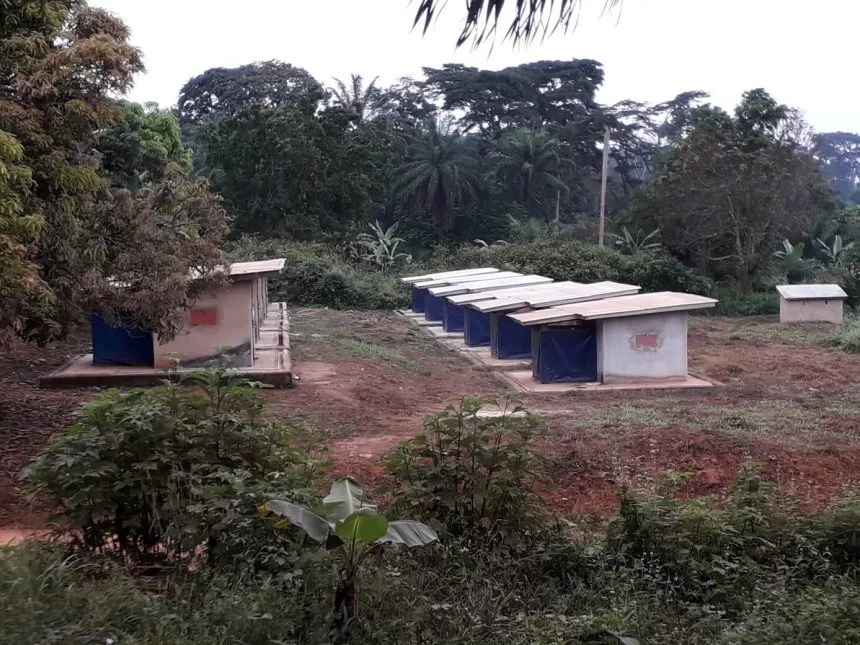Our Experimental Hut Station located in Mibellon, Adamawa Region of Cameroon, is located in close proximity to permanent water bodies, including a lake and swamps. This location provide suitable breeding sites for mosquitoes (An. funestus), which are highly resistant to insecticide, since a survey in the area revealed a high usage of insecticides in the coffee and watermelon farms.
Need Help?
Please Feel Free To Contact Us. We Will Get Back To You With 1-2 Business Days.
Email: crid@crid-cam.com
Phone: +237 673 08 60 46/ +237 24 35 77 60
Experimental Field Station

The Architecture
The huts are built following the WHO recommended prototype for the West African region. These Experimental Huts were constructed on a concrete base of cement surrounded by a drainage channel to trap ants. The walls are made from concrete bricks and plastered inside and outside with a plaster made from a mixture of cement and sand. The roof is made from corrugated iron, and the ceiling is made from plywood. The four windows located on three sides of the hut are designed to create an angle with a 2cm gap, which will facilitate the entry of mosquitoes flying upward, thus, prevent the mosquitoes from escaping once they enter the hut. A veranda trap at the back of the hut according to WHO protocol a curtain was used as a separation between the veranda and the rest of the hut.
Use the stations
The Station is used for small-scale field trials (phase II). The phase II studies in experimental huts aims at assessing the performance of bed nets in semi-natural conditions. This performance of long lasting insecticide net (LNs) against free-flying wild mosquitoes is evaluated in terms of inhibiting blood-feeding, deterring mosquitoes and inducing exophily and mortality.
Achievements
After meeting the requirements of phase I testing, the bed nets from several companies across the world have gone through the phase II testing in our experimental station. Our staff is well experienced with Phase 2 experimental hut trials. Using this experimental hut in Mibellon, we are able to assess the impact of insecticide resistance (Menze et al.,2020 ; Weedall et al.,2019 ; Mugenzi et al.,2020) on the effectiveness of vector control tools such as bed nets and indoor residual spray (IRS).
